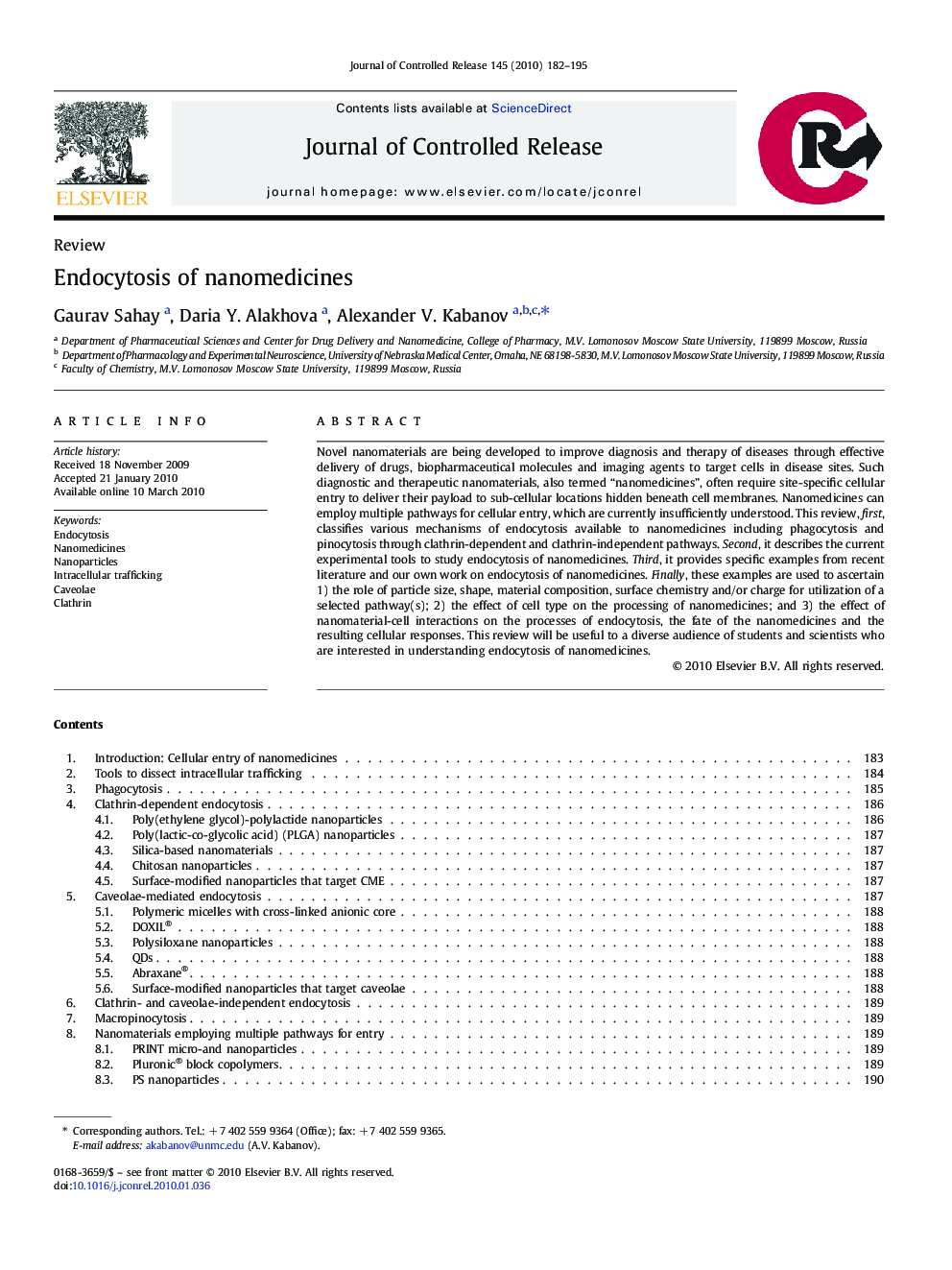| Article ID | Journal | Published Year | Pages | File Type |
|---|---|---|---|---|
| 1425534 | Journal of Controlled Release | 2010 | 14 Pages |
Novel nanomaterials are being developed to improve diagnosis and therapy of diseases through effective delivery of drugs, biopharmaceutical molecules and imaging agents to target cells in disease sites. Such diagnostic and therapeutic nanomaterials, also termed “nanomedicines”, often require site-specific cellular entry to deliver their payload to sub-cellular locations hidden beneath cell membranes. Nanomedicines can employ multiple pathways for cellular entry, which are currently insufficiently understood. This review, first, classifies various mechanisms of endocytosis available to nanomedicines including phagocytosis and pinocytosis through clathrin-dependent and clathrin-independent pathways. Second, it describes the current experimental tools to study endocytosis of nanomedicines. Third, it provides specific examples from recent literature and our own work on endocytosis of nanomedicines. Finally, these examples are used to ascertain 1) the role of particle size, shape, material composition, surface chemistry and/or charge for utilization of a selected pathway(s); 2) the effect of cell type on the processing of nanomedicines; and 3) the effect of nanomaterial-cell interactions on the processes of endocytosis, the fate of the nanomedicines and the resulting cellular responses. This review will be useful to a diverse audience of students and scientists who are interested in understanding endocytosis of nanomedicines.
Graphical abstractNanomedicines utilize different intracellular trafficking pathways to gain cellular entry. After exploitation of these entry pathways, nanomaterials processed through complex sorting mechanisms are driven to specific intracellular compartments. The role of physicochemical properties of nanomedicines, cellular type and nanomedicines–cell interactions on employment of specialized endocytic pathways was reviewed. The understanding of endocytosis of nanomedicines will improve subcellular targeting of drugs/imaging agents.Figure optionsDownload full-size imageDownload as PowerPoint slide
